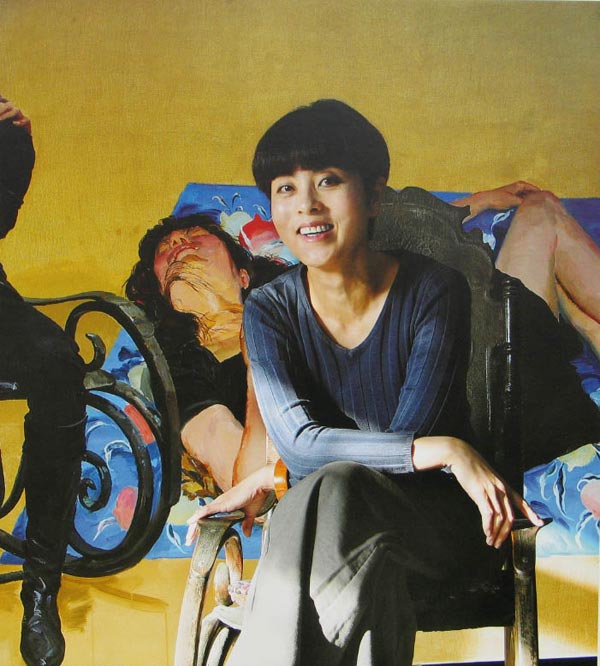Yu Hong: Paintings that show the passage of time
- By Jon Burris
 0 Comment(s)
0 Comment(s) Print
Print E-mail China Today, February 27, 2014
E-mail China Today, February 27, 2014
As an artist, Yu Hong's career is significant on many levels, virtually paralleling the development of the contemporary art scene in post-"cultural revolution" China.
|
Yu Hong |
Born in 1966, age-wise she was a member of what has come to be known as the new generation of artists entering the Central Academy of Fine Arts in 1984. Consequently, she was witness to the 1985 New Wave art movement and the controversial China Avant-garde Exhibition of 1989. In the early 1990s, she and her husband, painter Liu Xiaodong, were classmates and friends with sixth-generation filmakers like Wang Xiaoshuai who cast them in his Winter and Spring's Life docu-drama about the struggles of two art students. Immediately after graduating in 1995, Hong was exhibiting her art widely and readily identified as one of the New Realist painters while other artists from her generation were still experimenting with Cynical Realist or Political Pop art.
Perhaps most importantly, she became an instructor at the Central Academy and in her capacity represented a new generation of instructors who shifted the focus from years of Socialist Realist ideology to a more relaxed, highly personal interpretation of painting.
In Hong's work, we can see a slow but definite maturation that seems to have eluded other artists of her age. Trying to get an idea of how she herself views her place in contemporary Chinese art, I recently asked her how she thinks her work has changed since we first met at the Central Academy in 1995.
"My paintings in the beginning were about self-discovery. My style hasn't changed that much over the past 15 years, but the story has evolved. I'm now more interested in the lives of others around me. My art has been a response to what I have experienced on a daily basis and my attitude about what is important has changed as I have grown older; I am recording my life as it happens, and that involves my family and my friends." Hong's art speaks to the simplicity and honesty of everyday life. It is not about stereotypes though. The development of her aesthetics has been a catharsis. Her earliest paintings were diaristic; they were about her marriage, her pregnancy, and her daughter, who was born in 1994. Since that time, she has produced one self-portrait and one portrait of her daughter on a yearly basis as a way of showing the passage of time.
Between 1999 and 2008, she created a powerful series of 50 paired paintings that contrasted her own childhood and adolescence with that of her daughter's, complete with images and photographs from the same dates, constructing a narrative of the time in which she has lived. In 2008, Hong began work on two monumental groupings of canvases referencing historical Chinese art as well as classical religious works. In Ladder to the Sky, 2008, she drew influence from the Ladder of Divine Ascent, a 12th-century icon from Saint Catherine's Monastery, Mount Sinai, Egypt, depicting the ascent to Heaven by monks. In Romance of Spring, 2008, her model was the Tang Dynasty painting The Court Ladies Preparing Newly Woven Silk. Both were updated using friends in place of historical figures. About these works, Hong says, "In these paintings I am bringing the traditional and modern together stylistically. My perspective is Asian, but the human condition is universal so my themes are universal. It is only natural that over time we understand this." I believe with her work, Hong is creating a New Classicism. Time will tell.
Jon Burris is a recognized photographer and writer, and has authored seven books on contemporary art and photography. His own photographs are included in private and institutional collections internationally.







Go to Forum >>0 Comment(s)